How Does the Steering Gear Work? A Complete Guide
What Is a Steering Gear?
The steering gear is an indispensable part of the steering system. It lies between the steering column and the steering linkages. It consists of multiple gears that convert rotary motion into lateral movement. The steering gear also enhances mechanical advantage to make the latter movement stronger.
Several types of steering gears have come and gone. While they have unique arrangements and parts, all of them include an input gear and an output gear.
If your vehicle has a conventional recirculating ball steering gear (and not a rack and pinion assembly) the input gear or worm gear is connected to the steering shaft. It has a toothed nut that meshes with another toothed gear. Meanwhile, the gear linked to the input gear is called the sector gear. It’s the part of the sector shaft that connects to a pitman arm, which is a part of the steering linkage.
Aside from the gears, there are bearings that hold up the sector shaft and worm gear shaft. They reduce the friction between the parts they support. Their type varies according to the steering gear assembly’s make and model.
Is the Steering Gear the Same as the Steering Box?
These days, the terms steering gear and steering box are used interchangeably to describe a recirculating ball-type steering gear. There is also another type of steering gear, called a rack and pinion assembly, which we will discuss below.
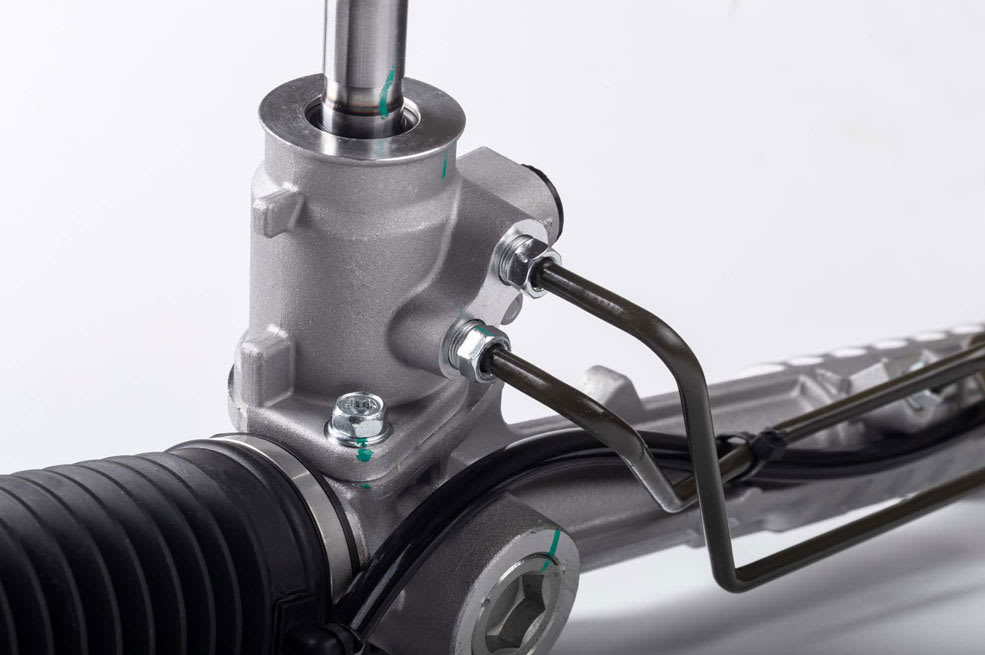

What Does the Steering Gear Do?
The steering gear converts the steering wheel’s circular motion into a linear motion. It also amplifies the resulting movement to turn heavy steering linkages and wheels.
With a conventional recirculating ball steering gear, turning the steering wheel sends a rotary motion down the steering shaft to the worm gear connected to that shaft. The movement rotates the worm gear, which in turn moves the sector gear and sector shaft.
When the sector shaft moves, the pitman arm attached to the shaft follows suit. The pitman arm moves the steering linkage laterally, which moves the wheel controlled by the linkage.
What Are the Types of Steering Gear?
Modern vehicles have either a rack and pinion steering gear or a recirculating ball steering gear. Knowing exactly what gear type your ride uses makes it easier to pick a compatible replacement for a damaged or worn-out gear.

In this type of steering gear, the input shaft attaches to the U-joint of the steering shaft. A seal at this area keeps lubricating oil from leaking out.
The recirculating ball steering gear is the most common type among modern vehicles. It got its name from the thrust bearings that sit above and below the worm gear. These bearings make it possible for the worm gear to turn faster by decreasing the friction between the gear and the housing. They also keep the worm gear’s endplay under control.
The cup for the upper thrust bearing sits in the housing, while the cup for the lower bearing lies in the adjuster plug at the worm gear’s lower end. The plug also holds the worm gear and the input shaft.
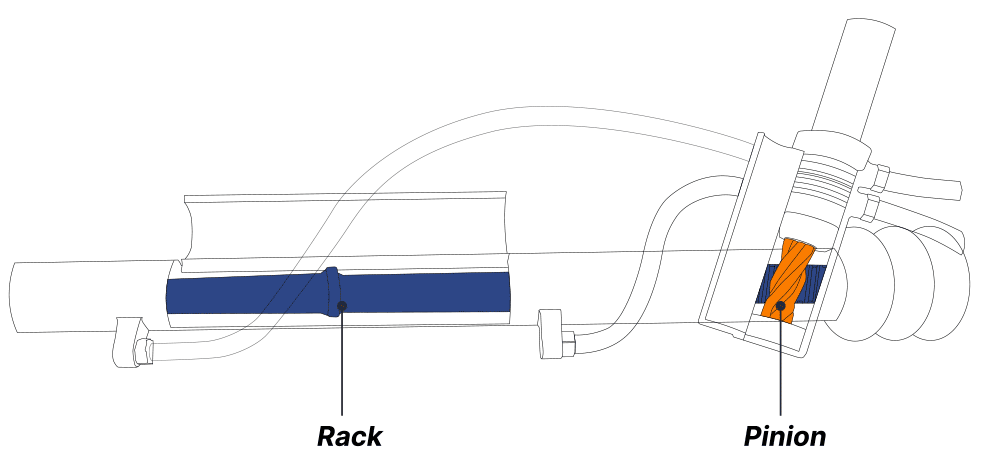
The rack and pinion steering gear gets its name from two of its most important parts: the rack gear and pinion gear.
The rack is a bar-shaped gear with teeth on one side that mesh with the pinion’s gear teeth. Covered in a tube-like steering gear housing, it connects to the tie rod in the steering linkage.
The pinion is a circular gear that serves as the input gear. It turns with the steering wheel and shaft, which moves the rack from side to side. The rack’s movement also causes the tie rod to move laterally while the wheel turns in the intended direction.
Rack and pinion gears are lighter and more compact than their recirculating ball counterparts. For this reason, most modern passenger vehicles use a rack and pinion-style steering gear.
What Are the Signs of a Bad Steering Gear?
The steering gear plays a vital role in the steering system. When its parts or the entire gear wears out, it can be difficult to change the direction your vehicle is going. Here are some of the most common symptoms of a faulty steering gear.
Grinding or Clunking Noises
Various steering gear components work together to convert the steering wheel’s motion into linear movement. They will eventually wear out, creating a gap between parts like gear teeth that require a precise gap. These loose parts can produce grinding or clunking noises.
Loose Steering
Also, when there’s too much free play between steering gear parts, the vehicle’s steering may feel loose and vague.
Binding Feeling in the Steering Wheel
Steering gear parts can end up binding together when their worn-out surfaces catch. It will take more force than usual to separate these bound parts, leading to the steering wheel becoming harder to turn.
Vehicle Drifts or Pulls to the Side
Is your vehicle drifting or pulling despite the wheels being perfectly aligned and the tires showing no signs of uneven wear? You may have a worn-out steering gear. Drifting can take place if the gear’s parts have too much play, while binding in the gear can cause your ride to pull toward one side even when you’re keeping the steering wheel still.
Power Steering Failure
Many electric power steering (EPS) integrate the electric steering gear with its EPS computer for maximum efficiency. If either part fails, the power steering will develop problems or even stop working outright. Power steering failure can also happen with a hydraulic steering gear if one of its crucial internal parts breaks down.
Dashboard Warning Light (Electric Power Assist Only)
If the electric power assist or steering gear acts up, the EPS computer will activate the appropriate warning light on the dashboard. It will also log the related diagnostic trouble codes to help whoever repairs the problem.
Fluid Leak (Hydraulic Steering Assist Only)
Leaks are a common problem in any car part that uses hydraulic fluid, and the hydraulic steering assist is no exception. When one of the oil seals degrades and leaks, the ensuing fluid loss reduces the power steering's performance. The lack of hydraulic fluid can damage the steering assist and the steering gear, so keep an eye out for oil pooling on the ground beneath the steering gear.


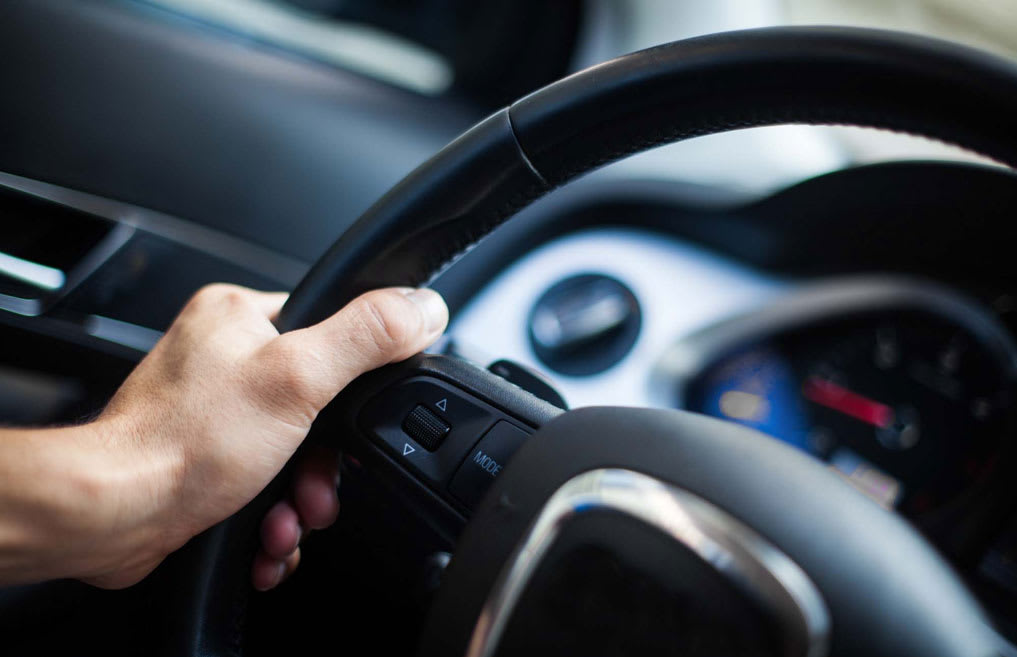





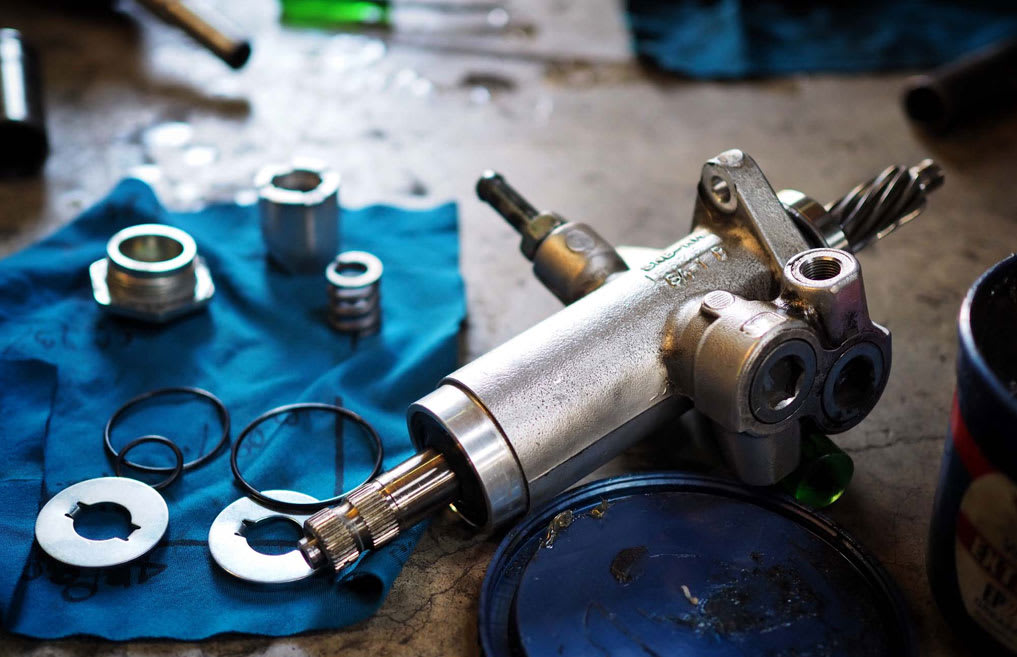

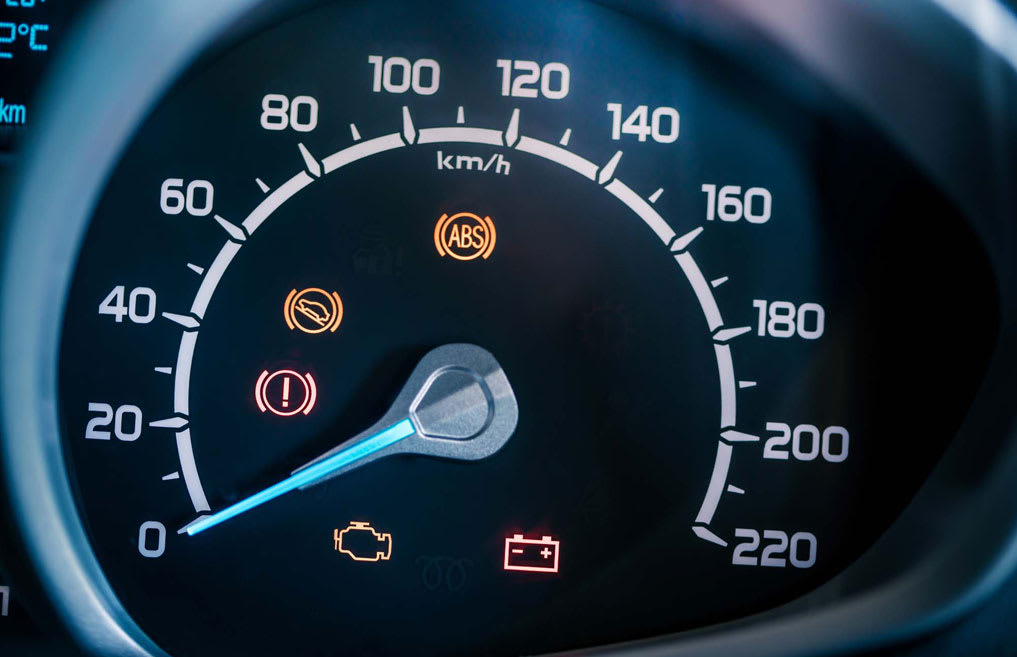

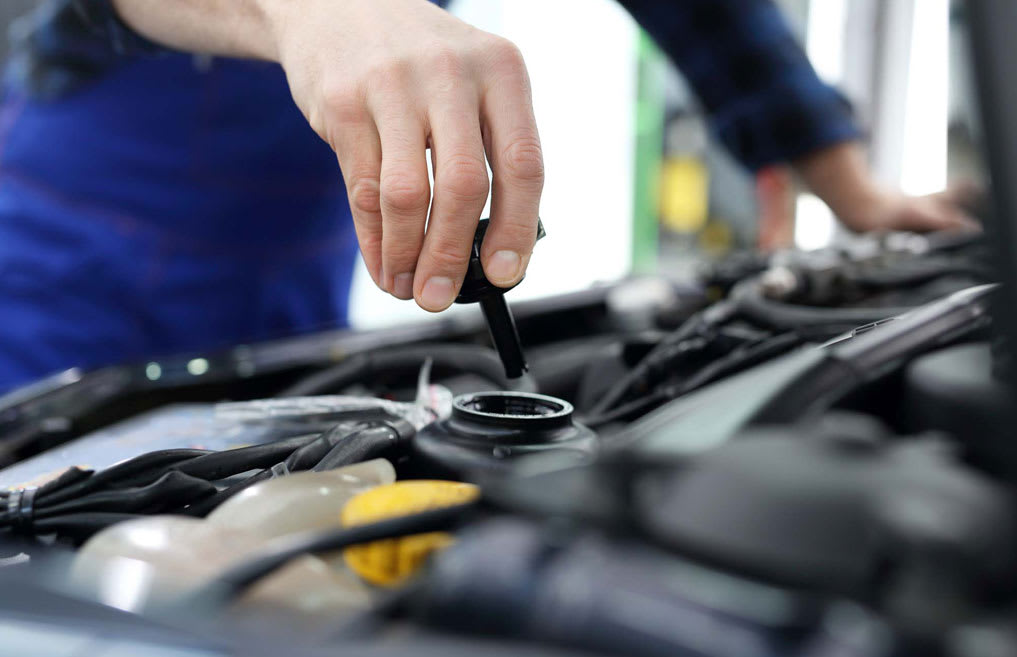


Can You Drive with a Bad Steering Gear?
It's not a good idea to keep driving with a faulty steering gear, even if you can compensate for the various steering problems it may cause. You can cause long-term damage to the steering gear and the power steering pump, especially if the power steering also has a fluid leak. It’s safer to replace a failing steering gear right away.
Can You Repair a Bad Steering Gear?
Fixing the steering gear on your own is a tall order. It’s an extensive process that involves removing, installing, and adjusting various parts aside from the gear itself.
You will need considerable mechanical repair skills and specialized tools for DIY steering gear repair. Otherwise, it would be more convenient to bring your ride to a trusted auto repair center. You will also need to be careful to avoid damaging the airbag clock spring (if equipped).
If your vehicle has electric power steering, start by inspecting its control circuit. Fixing circuit problems may restore the steering gear’s performance without having to replace the gear. In case you do end up replacing the electric steering gear, you will have to recalibrate the new gear’s steering angles.
If your vehicle operates with a hydraulic steering gear, you must bleed the air from the system. Afterward, refill the gear’s hydraulic fluid.
Once the new steering gear is in place, put your vehicle through a wheel alignment to make sure its wheels are correctly positioned.
How Much Does It Cost To Replace the Steering Gear?
Having a professional replace your car’s steering gear usually costs anywhere between $1,000 and $2,500. If you do the work yourself, purchasing the steering gear typicallycosts anywhere between $100 to $450, and the price can go even higher if you purchase the replacement part from a dealership. Of course, the exact price of the repair will depend on a variety of factors, including the year, make, and model of the vehicle.
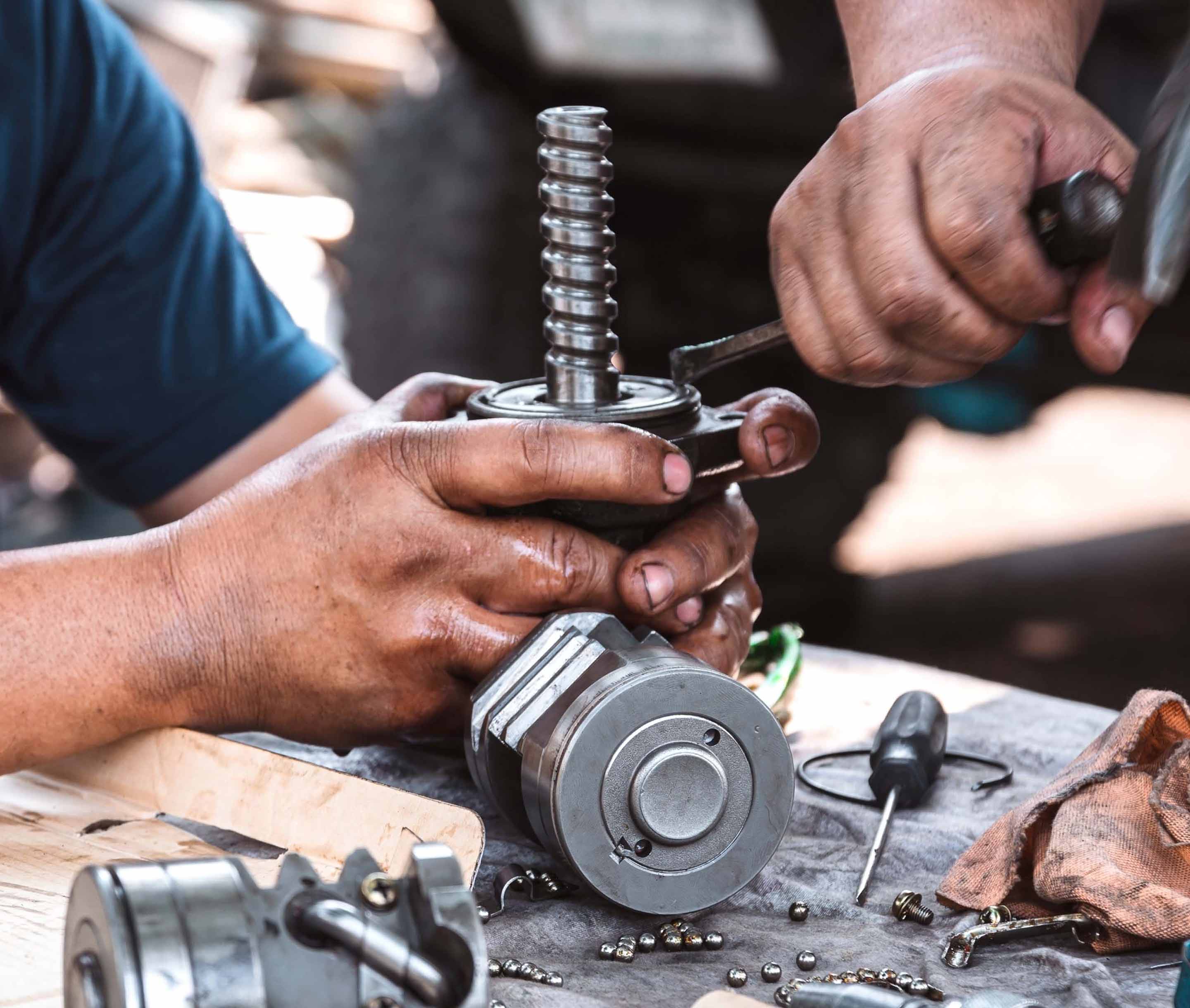
Conclusion
Without the steering gear to convert and amplify the steering wheel’s input, your driving experience will become unpleasant or impossible. So always be on the lookout for the warning signs of a bad steering gear. Take your vehicle to a mechanic as soon as you spot any symptoms for repairs.
About CarParts.com
For over 20 years, CarParts.com has been a leader in the e-commerce automotive aftermarket, providing collision, engine, and performance parts and accessories. With over 50 million parts delivered, we've helped everyday drivers across the contiguous United States find the right parts to keep their vehicles on the road.
With a focus on the end-to-end customer experience, we've designed our website and sourcing network to simplify the way drivers get the parts they need. Our vehicle selector and easy-to-navigate, mobile-friendly website offer customers guaranteed fitment and a convenient online shopping experience. And with our own wide distribution network, we bring the very best brands and manufacturers directly to consumer hands, cutting out all the brick-and-mortar supply chain costs to provide quality parts at a discount for our loyal customers. Combined with our 60-day return policy and satisfaction guarantee, CarParts.com makes it simple for customers to get parts delivered straight to their door. CarParts.com is headquartered in Torrance, California.

